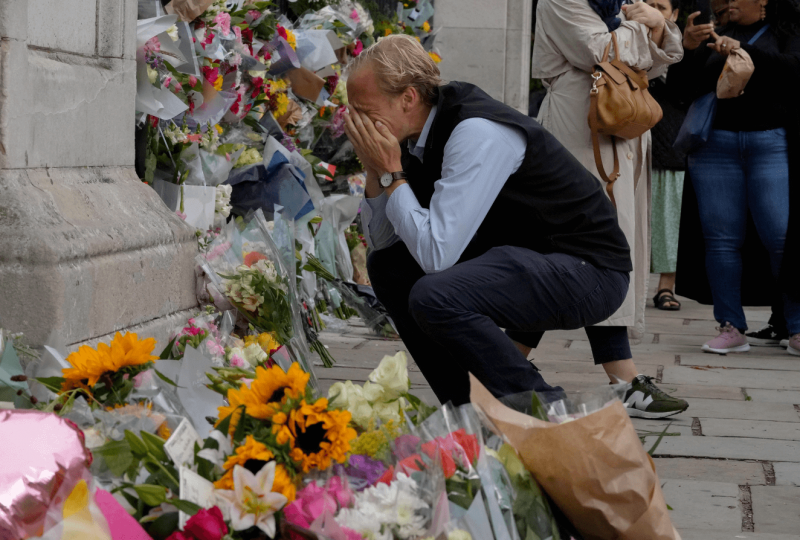The Queen of England Has Died. Here is Why She Was Important to the Economy
Sep 09 2022

At the age of 96, Queen Elizabeth II passed away on Thursday. The City, the financial district of London, will be where people will remember the Queen the most. One of the locations where a new monarch is proclaimed is the City's Royal Exchange, where sizable crowds gathered in silence to celebrate Queen Elizabeth II's Accession in February 1952.

The Cover of Magazine “Time” with The Elizabeth II Sept.26 / Oct.3 2022
The Queen and Business
There was an important link between the Crown and business. There exists a tiny writ granted by William the Conqueror in 1067, and all the Guilds and Livery Companies that play such a vital part in the municipal and economic life of London have been granted charters of incorporation from the Crown.
It became a tradition that a monarch made a ceremonial visit to the City at important moments in the reign. The Queen was entertained at London's Guildhall, home to the City's government since the Middle Ages, soon after her Coronation.
She entertained and gave major speeches there for her Silver and Golden Weddings, as well as her Silver Jubilee, and the City welcomed her back after key abroad visits, such as the Commonwealth tour in 1953-1954.
She conferred the honorary Freedom of the Worshipful Company of Drapers in 1947 and the Freedom of the City of London in 1948.
Aside from these ceremonial roles and affiliations, she was always ready to promote financial organizations, most notably launching the new London Stock Exchange building in 1972 - and surviving long enough to inaugurate another in 2004.
Though she climbed above the fray of business in the same way she rose above politics, she made a wise observation when the London School of Economics opened its New Academic Building in November 2008.
She described the market volatility as "terrible" and questioned Professor Luis Garicano why no one had recognized the impending loan crisis.
'How come no one noticed? 'His response was, 'At every point, someone relied on someone else, and everyone felt they were doing the right thing.'
The British Academy established a conference to explore the topic the following year and delivered their conclusions to the Queen on July 22, 2009 - that the crisis had been predicted, but not the specific time or fury. In short, they decided that it was caused by a 'failure of the collective imagination of many clever individuals, both in this country and throughout the world, to recognize the risks to the system as a whole.'

When the Queen paid a visit to the Bank of England in 2012, she was shown a bank note she had signed as a small girl in 1937 and thinking of the recent financial crisis. She remarked that the bankers had become 'loose.' She used the phrase "complacency."
The Biography of The Queen Elizabeth II
Born in 1926, the oldest daughter of the Duke and Duchess of York, and therefore third in line to her grandfather's throne, Elizabeth II had no clue that she would be called to serve as Queen until her uncle, Edward VIII, abdicated in December 1936, when she was 10.
She had a pleasant youth since she was raised in a loving home with her sister Princess Margaret as her closest companion, despite being four years younger. Even throughout the war, she made the most of their solitude at Windsor Castle. She had met Prince Philip of Greece and Denmark in 1939, and the only time she deviated from the character was when she married him in 1947. It's easy to see why. He was a handsome prince who served with distinction in the Royal Navy during WWII. In their 73-year marriage, he was a strong, occasionally confrontational, but always supportive husband on whom she could rely.

They may have anticipated a few years of relative independence to raise their small family, but George VI died in 1952. The Queen embraced her new responsibility instantly and served it with loyalty and dignity for nearly 70 years. Perhaps it was her idea that if she saw her father in the hereafter, she would be able to look him in the eyes with confidence that she had done a good job for him.
And Prince Philip, who gave up his beloved naval profession, made it his mission to help her and alleviate her load. As they welcomed heads of state to Britain and traveled the world, a pattern emerged. They set aside numerous personal sentiments in order to appease, move things ahead diplomatically, and pave the way for future generations, whether with Germany, Japan, Russia, China, or, more recently, Ireland.
The Royal Family brought considerable value to Britain, but anytime royal finances were questioned, there was a chance for opponents to express their views.
Since George III's reign, money from the Crown Properties, which included lands such as Ascot Racecourse, royal residences, the seabed, and valuable retail estates, has been transferred to the United Kingdom. Government in return for Civil List revenue At the start of her reign, the Queen was granted a Civil List for her general costs, which inevitably proved insufficient as the reign progressed. In 1971, there was a thorough parliamentary investigation of royal finances.
The Civil List was superseded in 2012 by the Sovereign Grant, which was determined as a proportion of the Crown Estate's earnings. The Queen had substantial commercial assets in her own right, with Barings overseeing her affairs for many years.
Queen Elizabeth II's reign will undoubtedly go down in history as one of the finest, if not the greatest, monarchs in the lengthy history of the British Isles. Her calm and peaceful demeanor, temperance, readiness to listen, take advice from those in a position to provide it, and consistent devotion to her duty all contributed to her reign's success.




